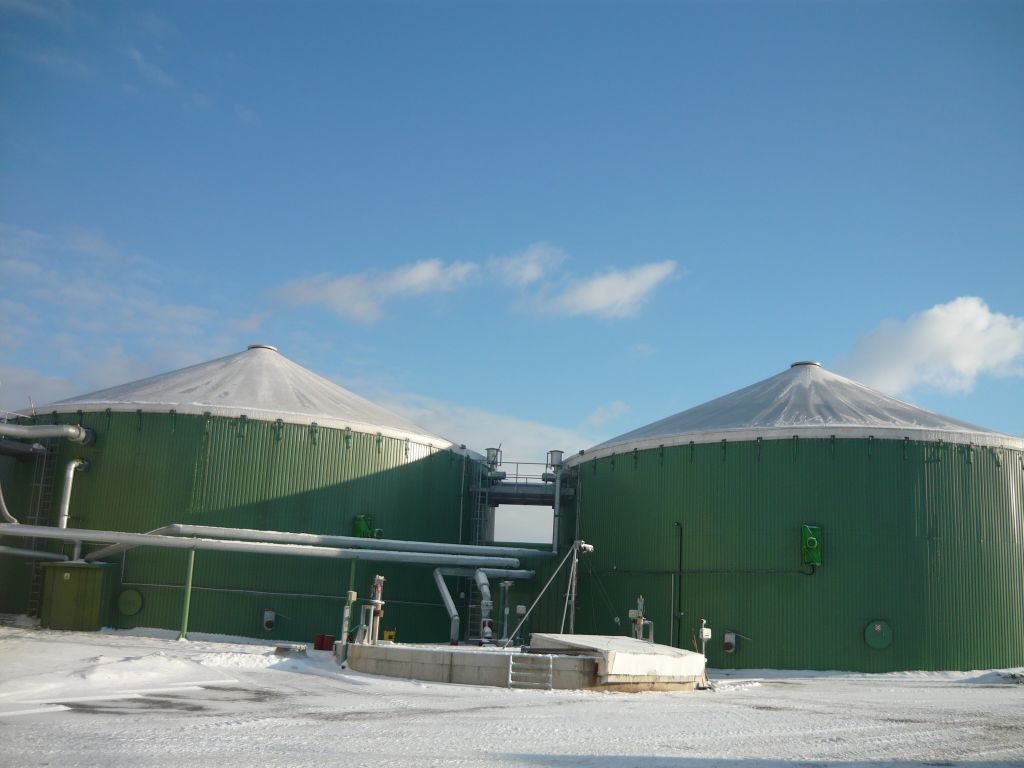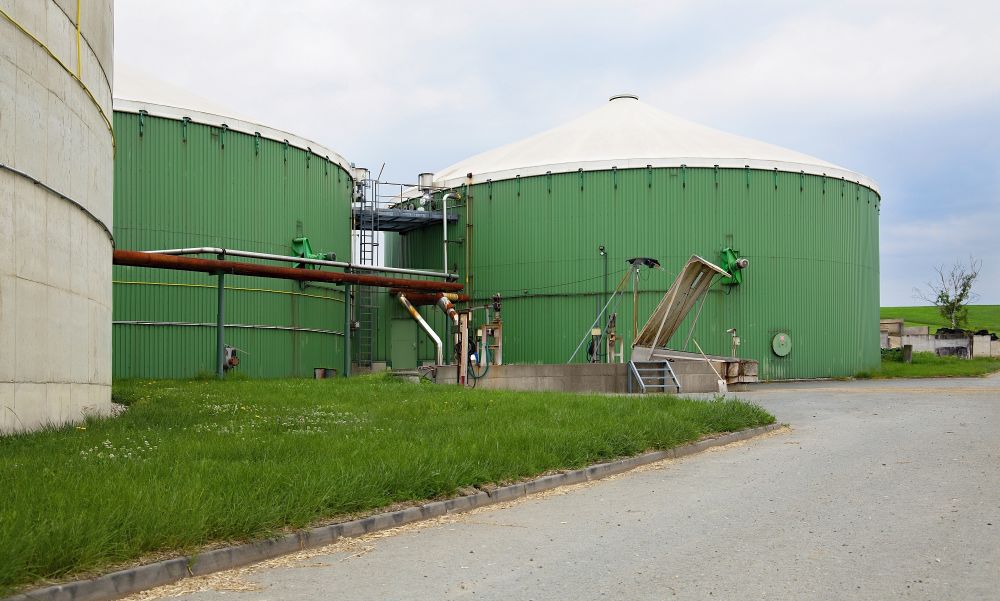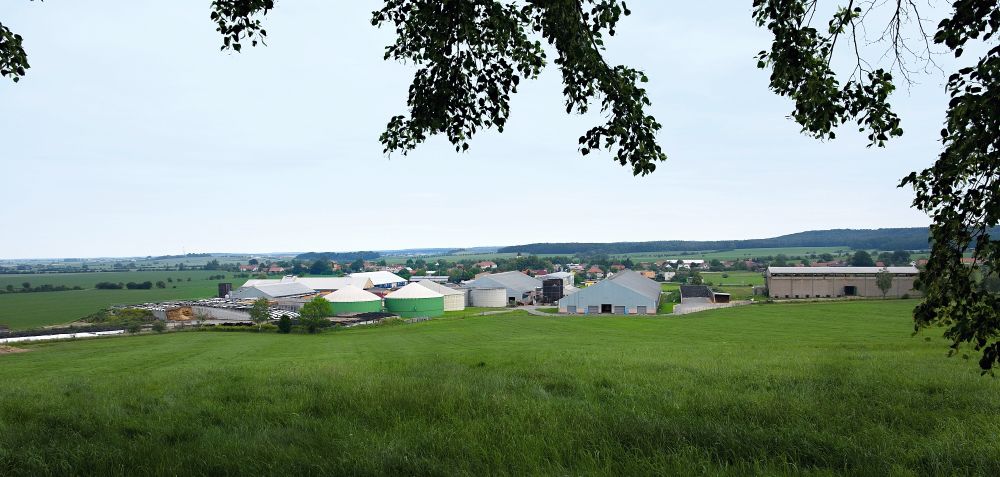EURECA
Good Practices


 Pictures:
Pictures:Photos taken by Jindřich Hemer
Alternative source of energy – Bio gas station in Ostřetín
Country:Main Subject:
Description:
Biogas stations (BPS) are currently one of the basic types of renewable energy sources (RES). The energy source in this case is energy-rich biogas produced by biochemical processes in the anaerobic decomposition of organic matter. Feedstock can be efficiently grown biomass, agricultural waste biomass, or municipal organic waste.
The biogas station is an excellent substitute for natural gas extraction. It is more environmentally friendly as the production does not generate waste that puts a strain on nature.
In a biogas station, a controlled fermentation process converts wet biomass into bio gas. It is used particularly prevalent in agricultural cooperatives, as liquid and solid livestock feces can be processed in it very efficiently, as well as silage, for example. The resulting product of bio gas stations is the electricity that is supplied to the energy grid and the heat, continuously throughout the year. Heat is usable, for example, for heating family homes, water heating, agricultural product dryers, etc. According to the Czech Biogas Association, 481 biogas stations were installed in the Czech Republic at the end of 2013 with a total installed capacity of 363.24 MW and a share of generated energy from the ONS of 20.7%, or approximately 2.5% of the total electricity production in the Czech Republic.
Unlike wind or solar power plants, BPS belongs to regulated renewable sources. Biogas can be stored and energy can be generated even in case of adverse or substandard weather conditions. Waste substances are not generated in their operation, whereas BPS can treat waste to generate electrical and thermal energy and thereby contribute to the recovery of biodegradable waste in a given region.
The biogas station in the village of Ostřetín has an electrical output of 844 kW and is used for processing agricultural production surpluses.
This station consists of three components. In a preparatory place, the cattle excrement, slurry, manure, biomass from fields and silage is being prepared and remixed. The very core of the bio gas station is two ferments, where bio gas is produced, and a putrefaction tank. The last part is the engine, where the gas is burned, and the generator, which produces the electric current. All input materials, like renewable energy sources, are subjected to anaerobic fermentation in the reactor, the product of which is bio gas suitable for combustion in a co generation unit. The output from the co generation unit is electrical energy, which goes out through trafo station into the public energy grid of distribution plants and heat, a part of which is used to heat the ferments. The remaining product from biomass it can be used as a fertilizer for the agriculture production. The rest of the heat is used for heating objects in the agricultural area and neighboring businesses such as a car service, a wood dryer, etc. The project is also unique in that waste heat is also used to heat water in the agricultural cooperative's production and for its employees. This biogas station has been financially supported by the European Union.
Generally said, the operation of biogas stations provides a significant boost to agriculture in rural areas. In addition, they also bring new job opportunities, lead to greenhouse gas reductions, and can appropriately supply heat to homes or businesses nearby. Thus, biogas productivity is both ecological and economic.
Reference links:
https://www.sunfin.cz/princip-bioplynovych-stanic
https://pardubicky.denik.cz/podnikani/fotogalerie-v-ostretine-otevreli-bioplynovou-stani.html
https://zsostretin.eu/bioplynova-stanice/
https://svetprumyslu.cz/bioplynove-stanice-v-kostce/
https://oenergetice.cz/plyn/bioplyn-a-bioplynove-stanice-v-cr
https://www.nazeleno.cz/energie/energetika/podivejte-se-kde-najdete-v-cesku-bioplynove-elektrarny.aspx
SDG direct/ indirect short justification:
Direct SGDs:
- affordable, reliable, sustainable and modern energy (SDG 7)
Indirect SDGs:
- sustainable and safe rural human settlements (SDG 11)
- responsible consumption and production (SDG 12)
Justification:
SDG 7 Energy produced from biomass is cheaper then energy produced from fossil fuel.
SDG 11 Sustainable and gaining affordable energy lead to an independent rural communities on energy produced from fossil fuel.
SDG 12 Surpluses from agricultural production does not have to be stored and ecologically disposed
Keywords:
City:
Questions:
- What natural materials are suitable for bio gas production?
- What products are produced in the production of bio gas ?
- What is the process called for bio gas production?
Additional comments:
Basic distribution of bio gas stations.
1. Agricultural bio gas stations - bio gas is produced from the input of agricultural primary production.
2. Industrial BPS - the main source of bio gas is sewage sludge.
3. Municipal BPS - deal with municipal bio waste and household residues such as grass, meat, fruit.
Authors:
Michaela Vachunová, Roxana Vachunová, Ludmila Kabelová, Jindřich Hemer
Spolek absolventů a přátel zemědělské školy v Chrudimi z.s.




